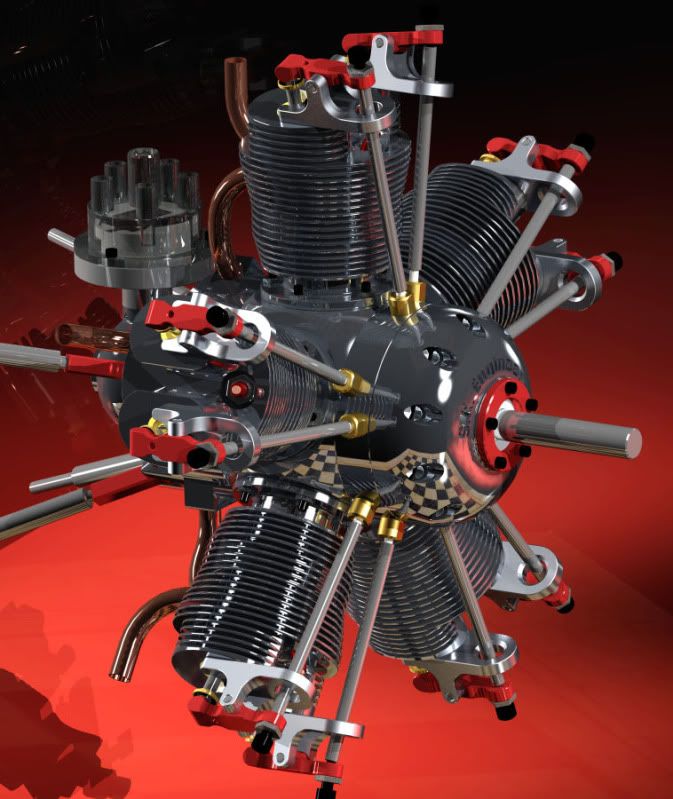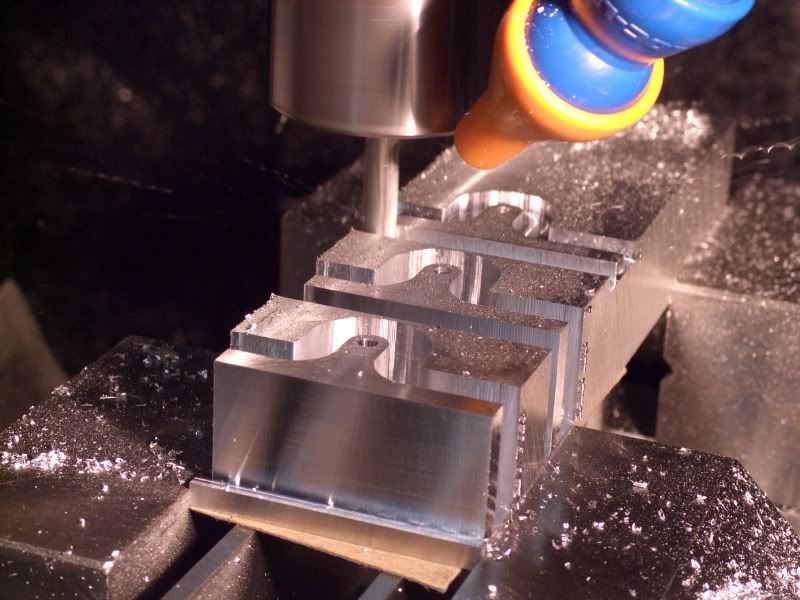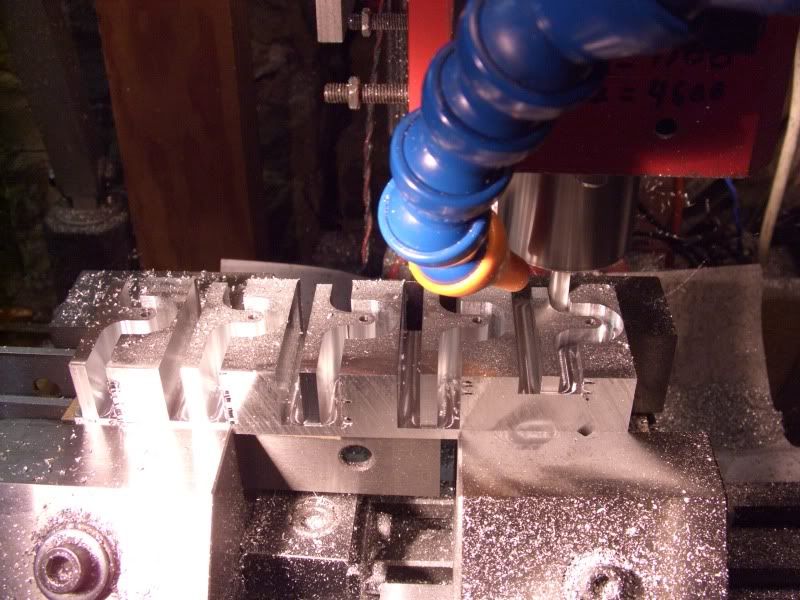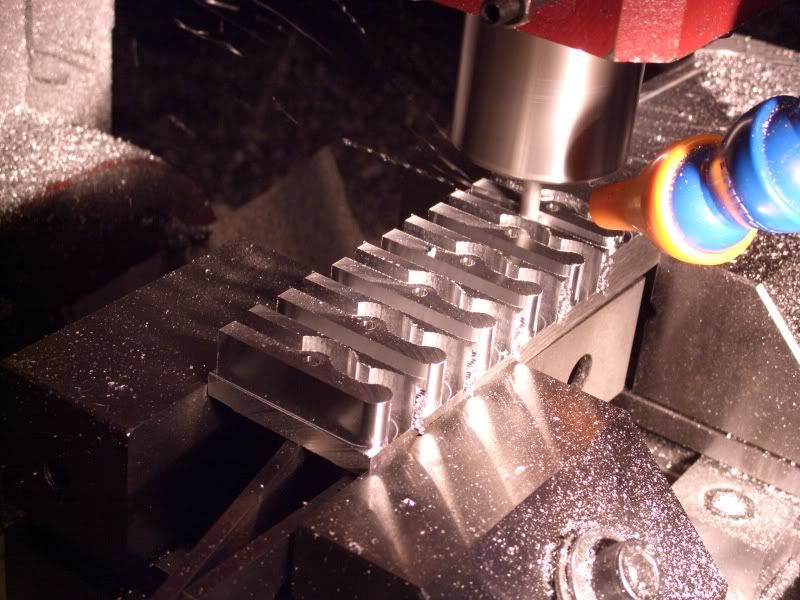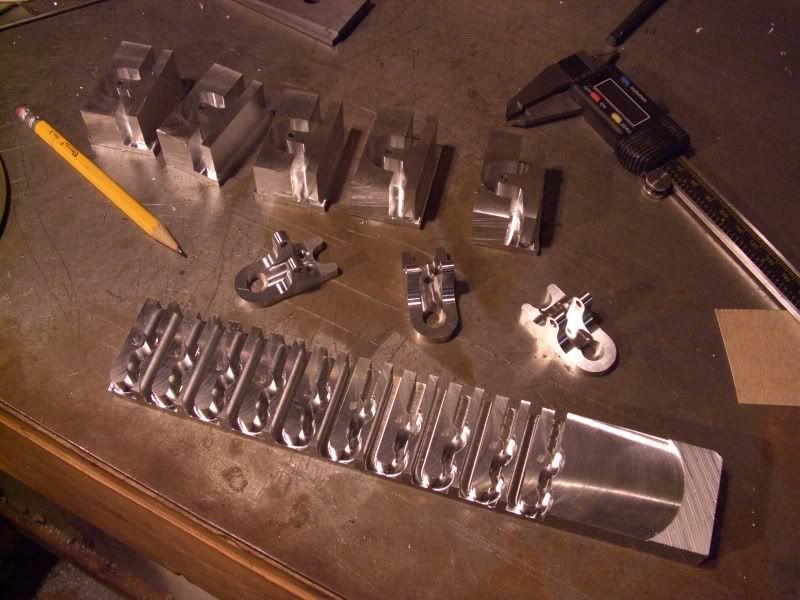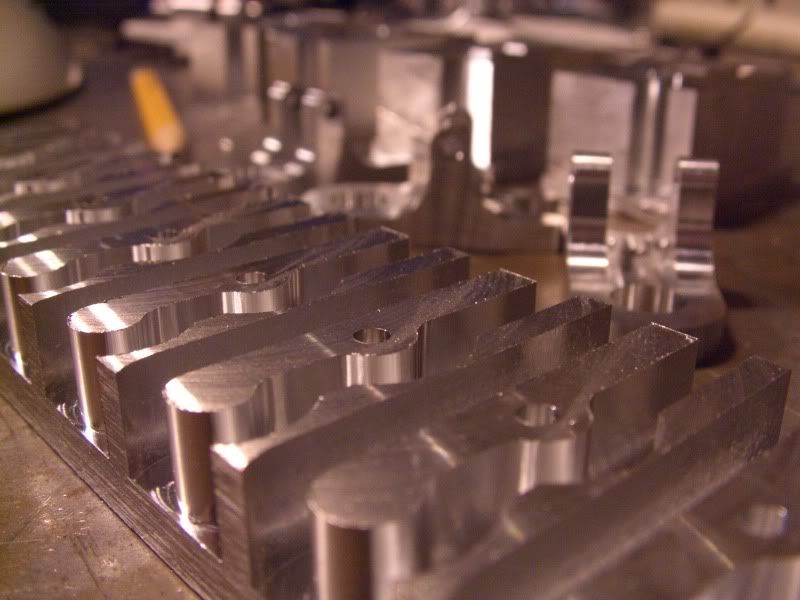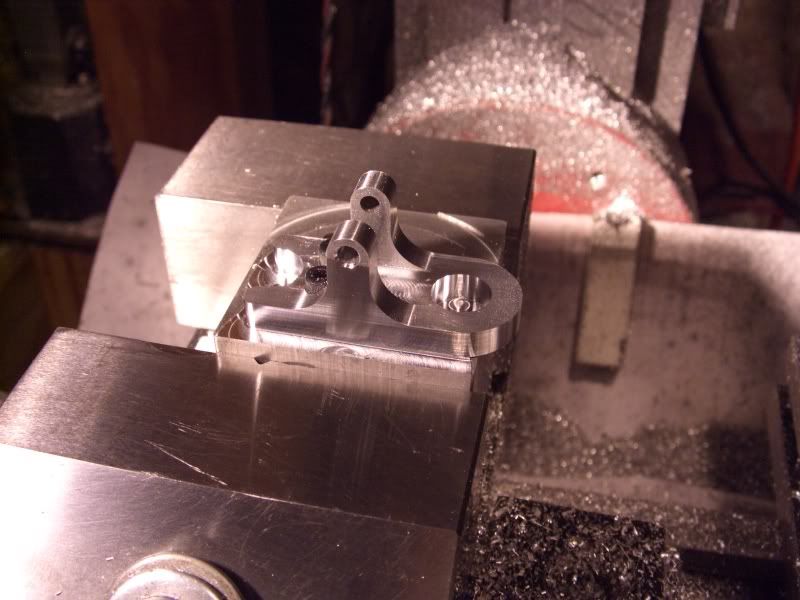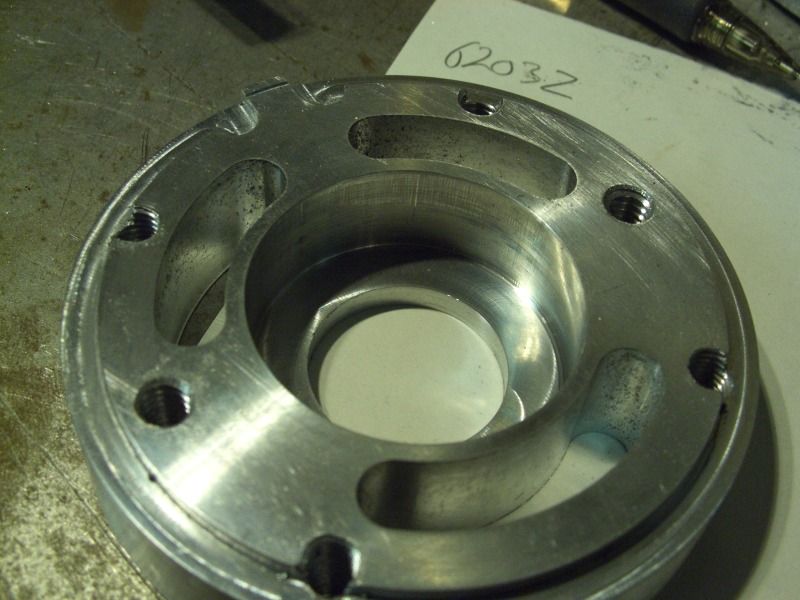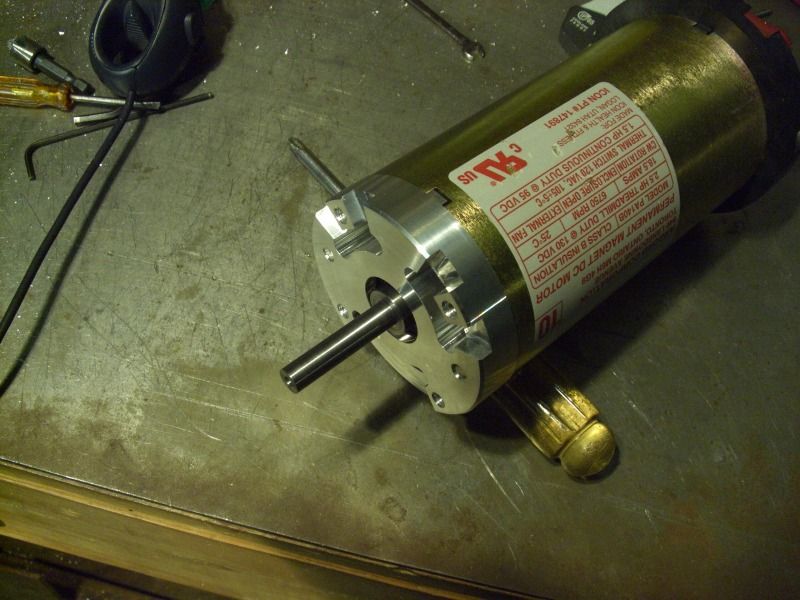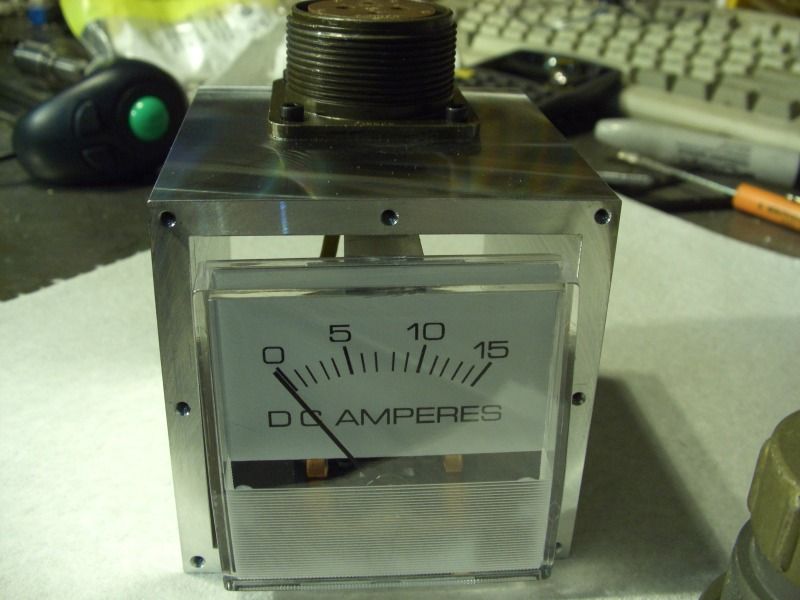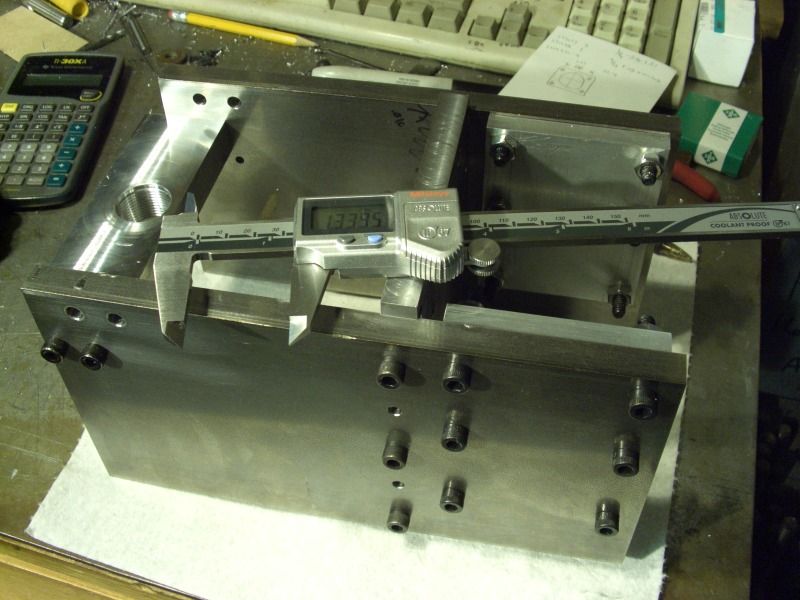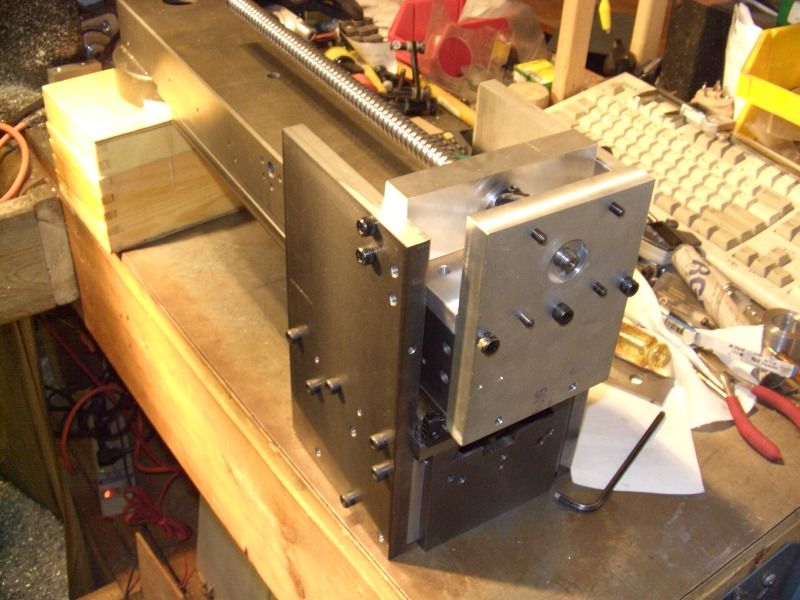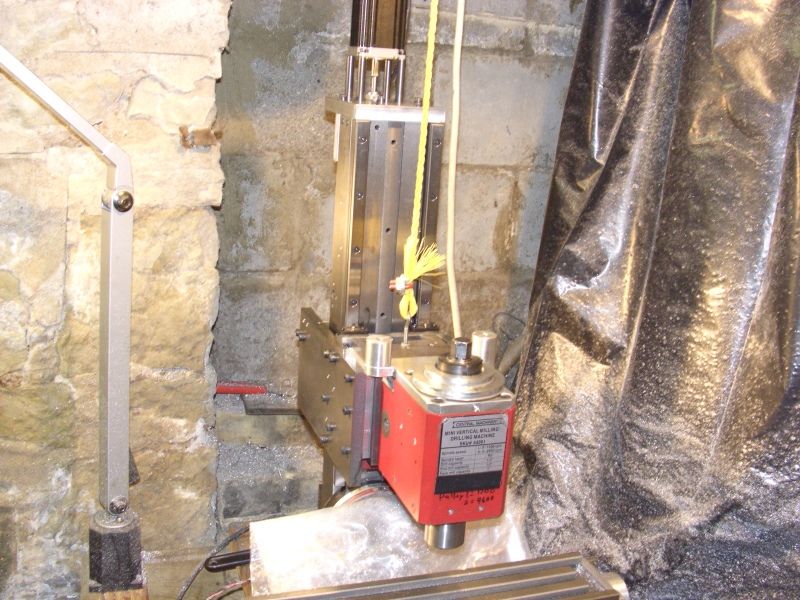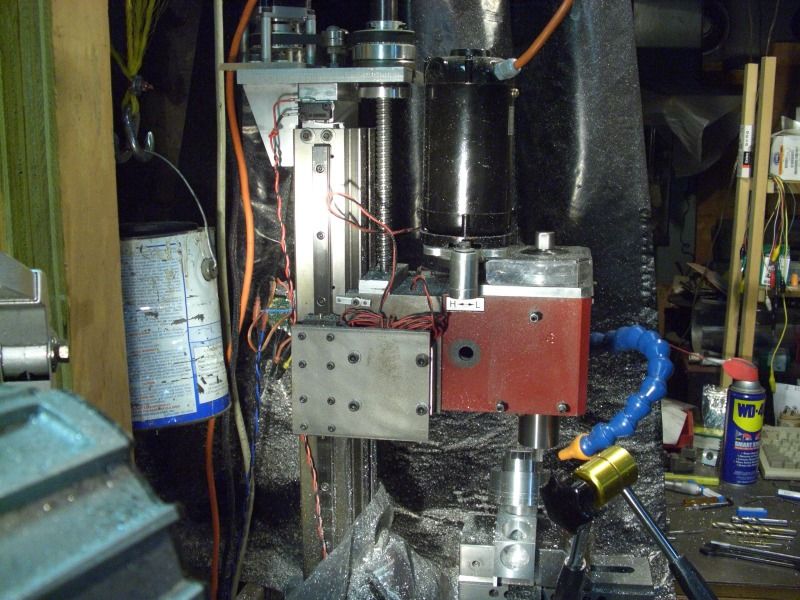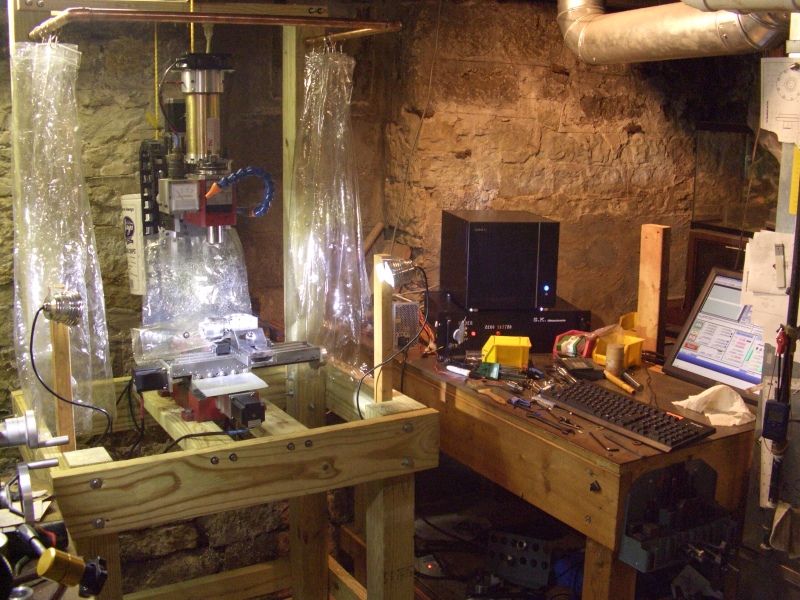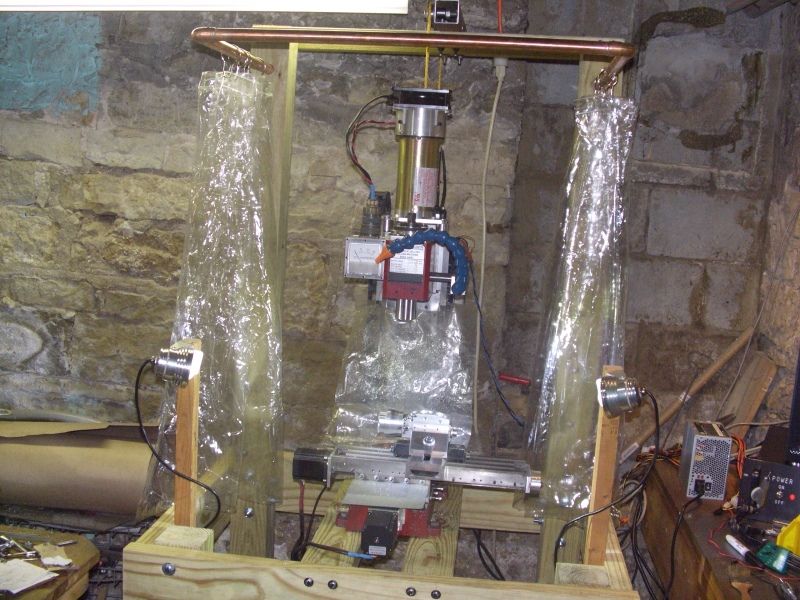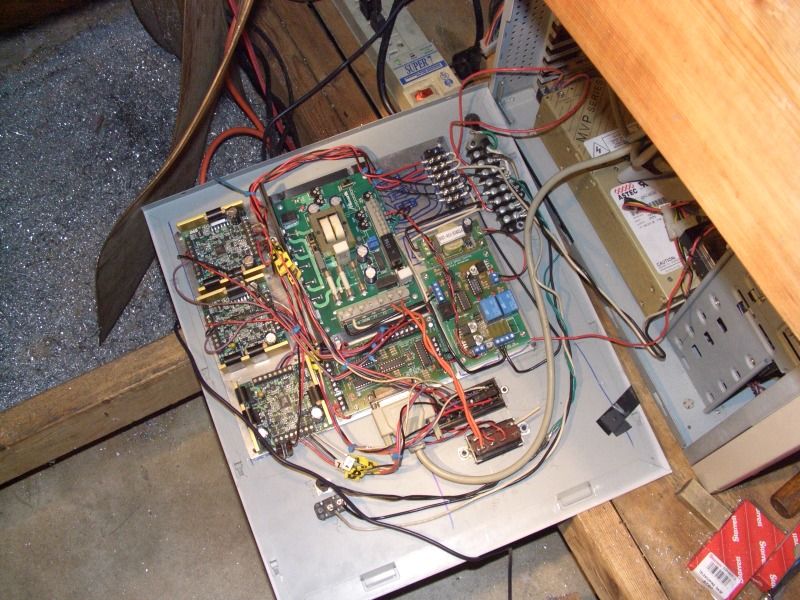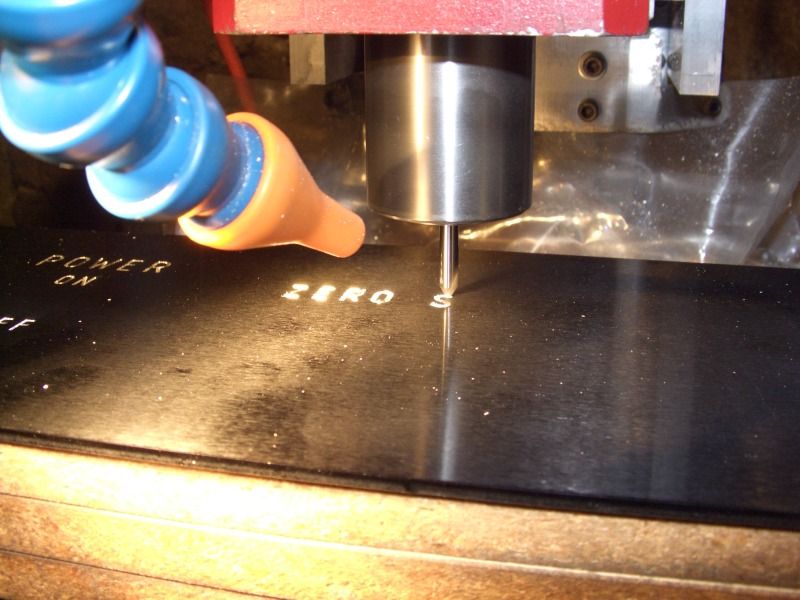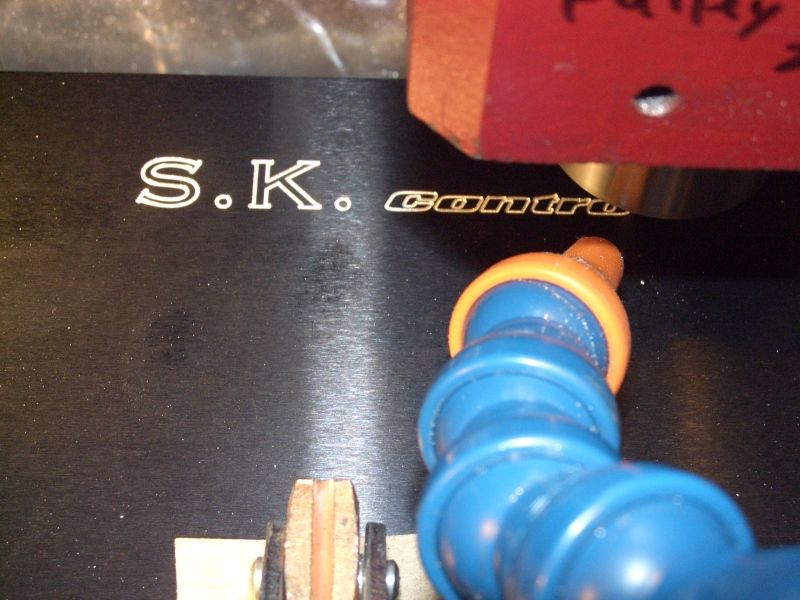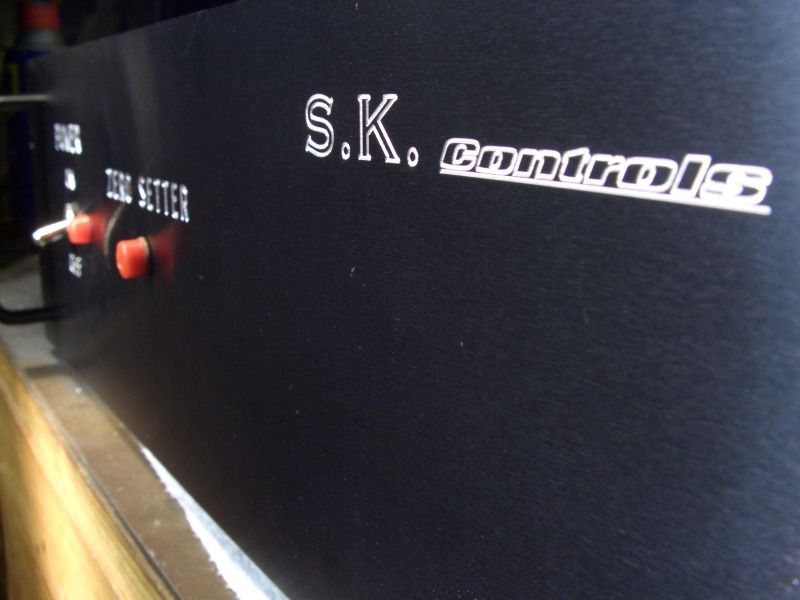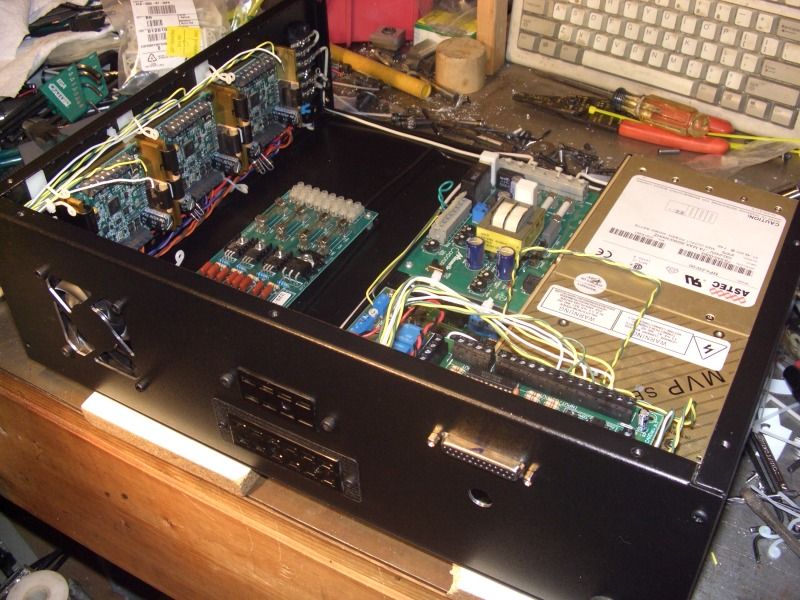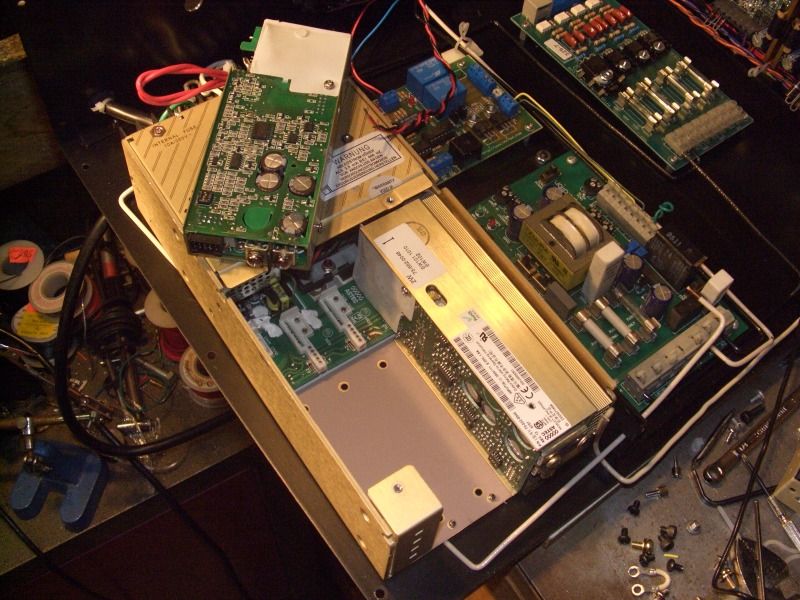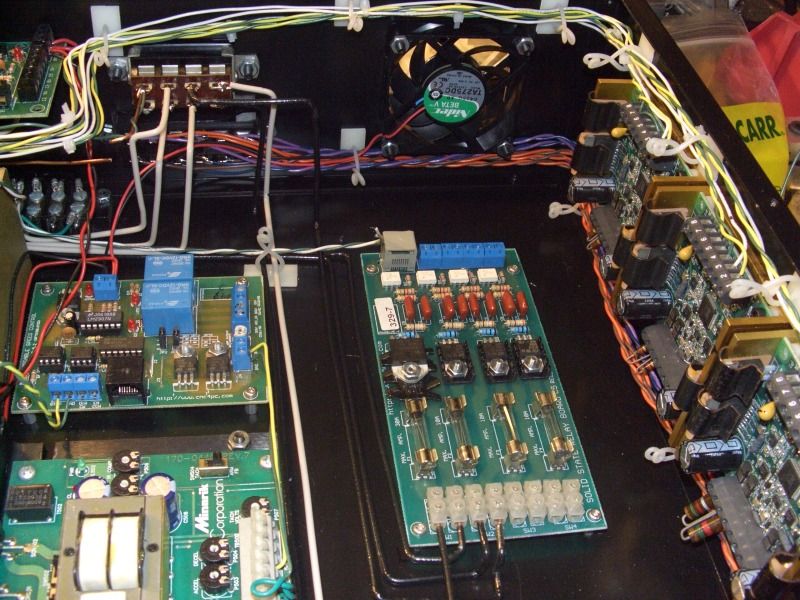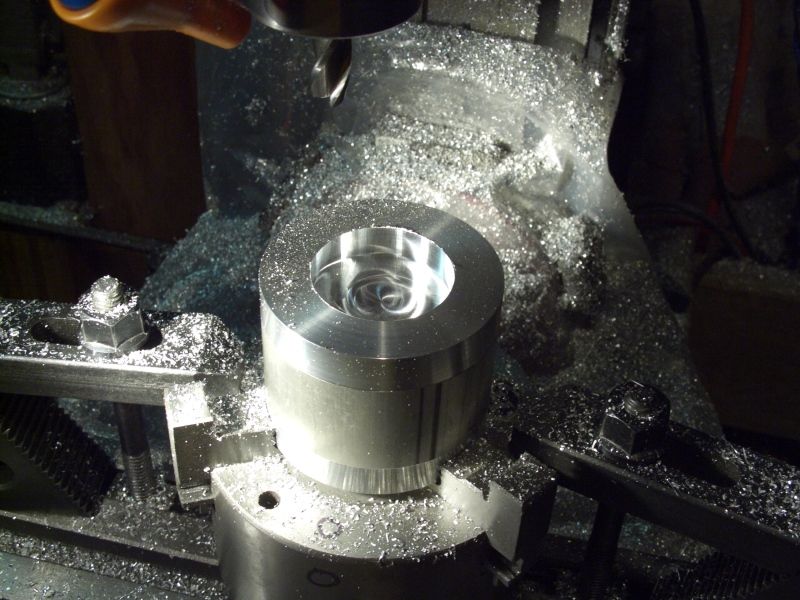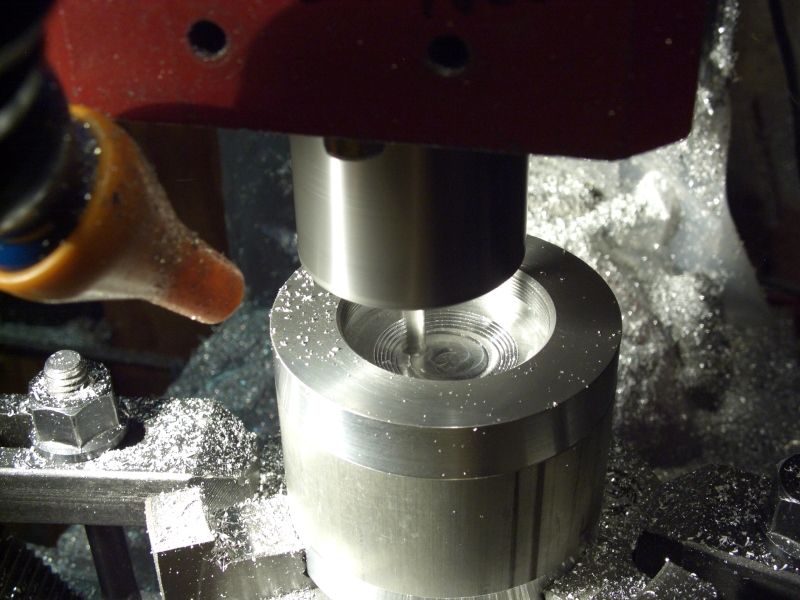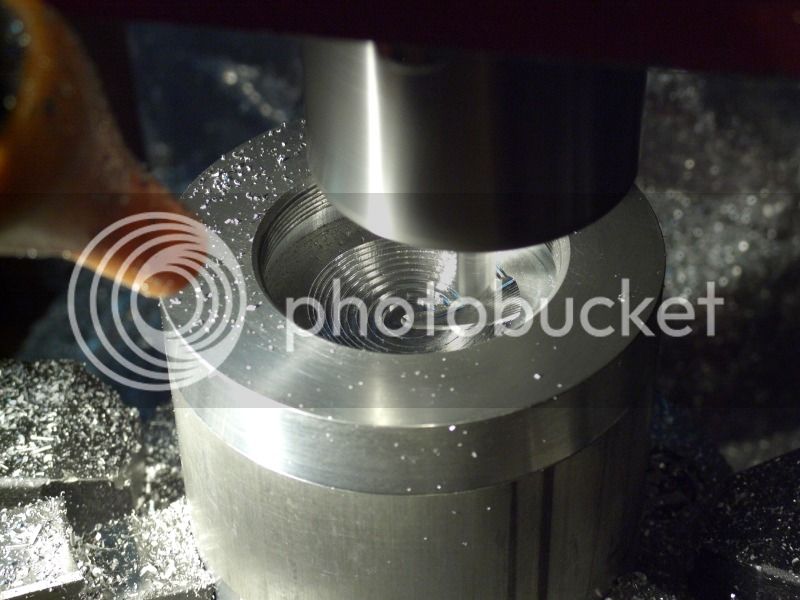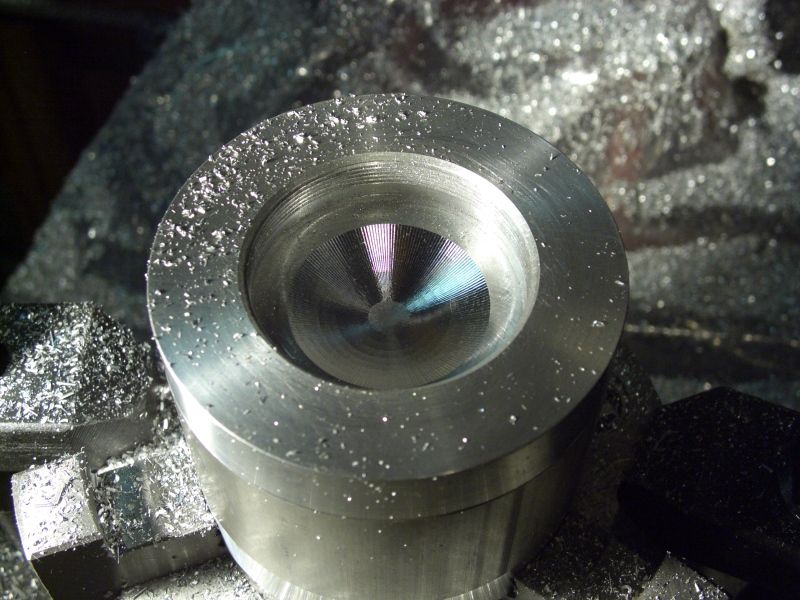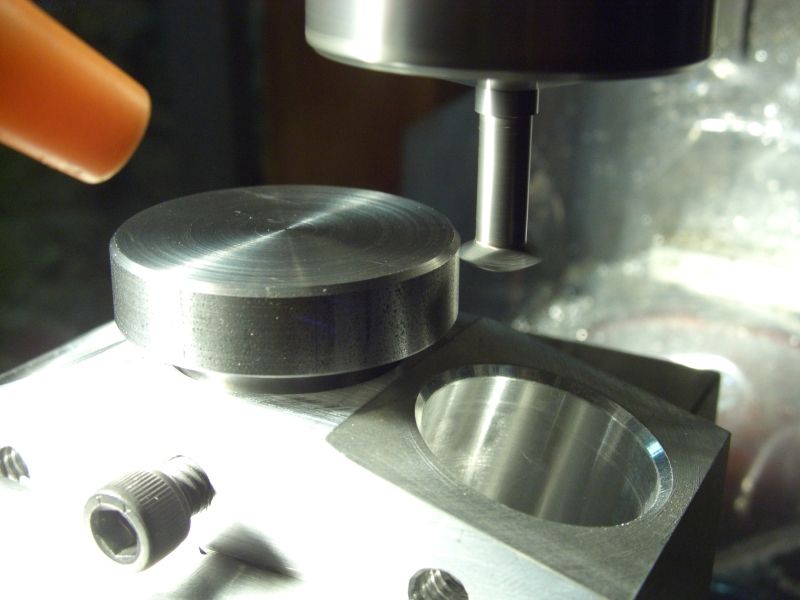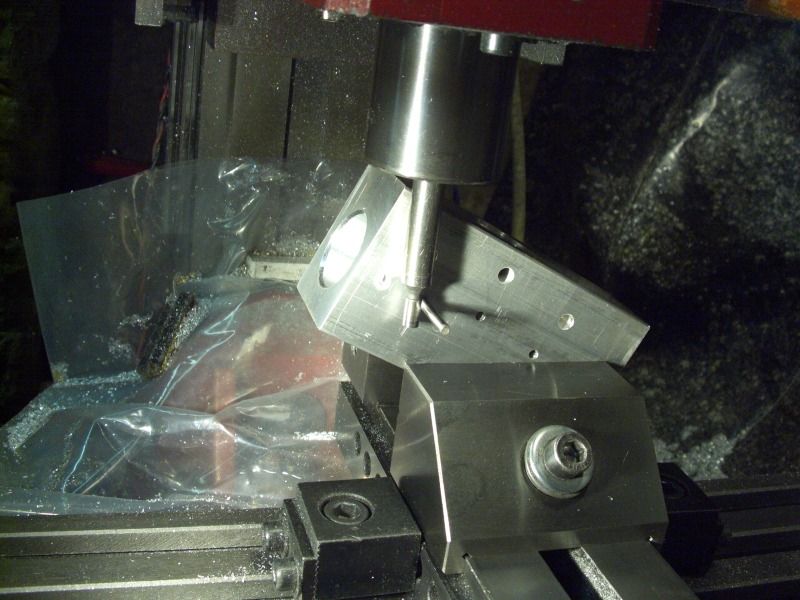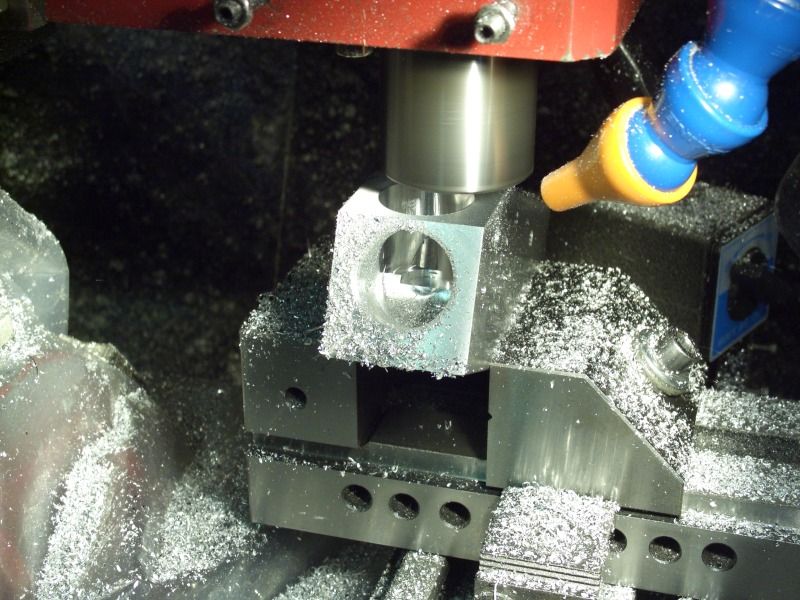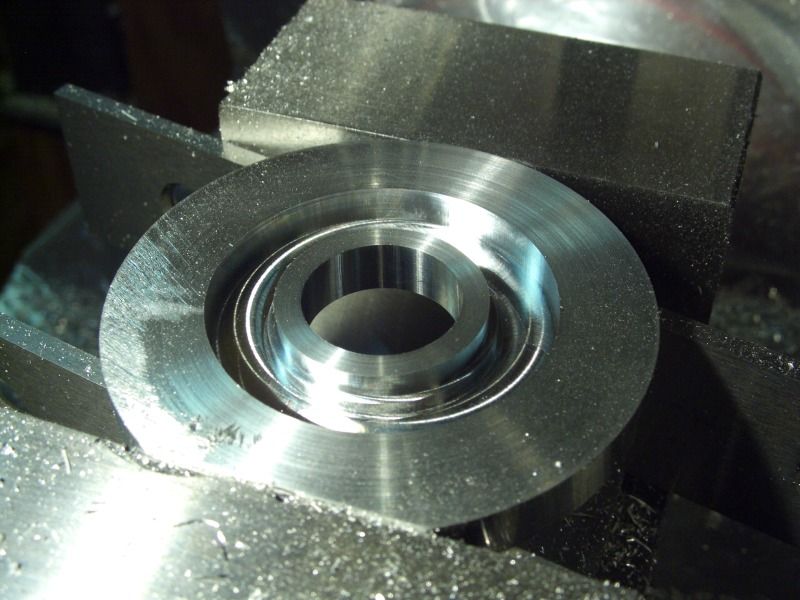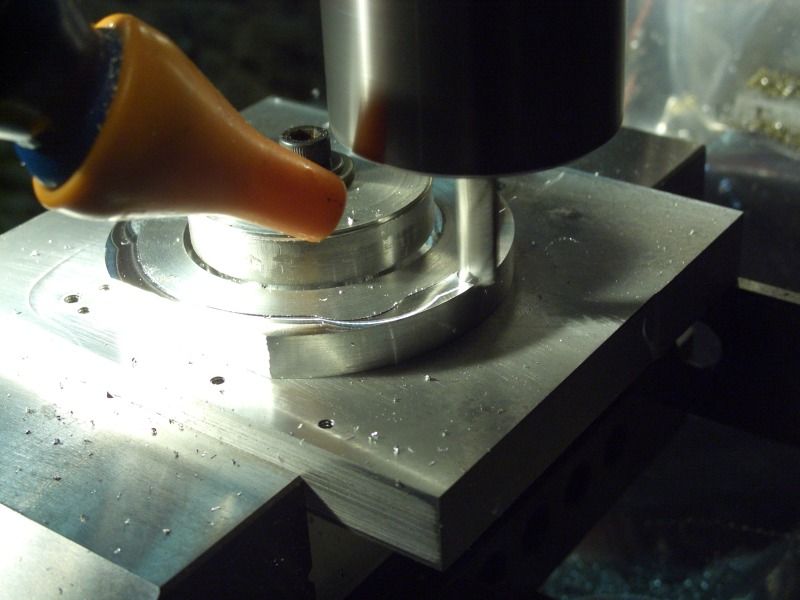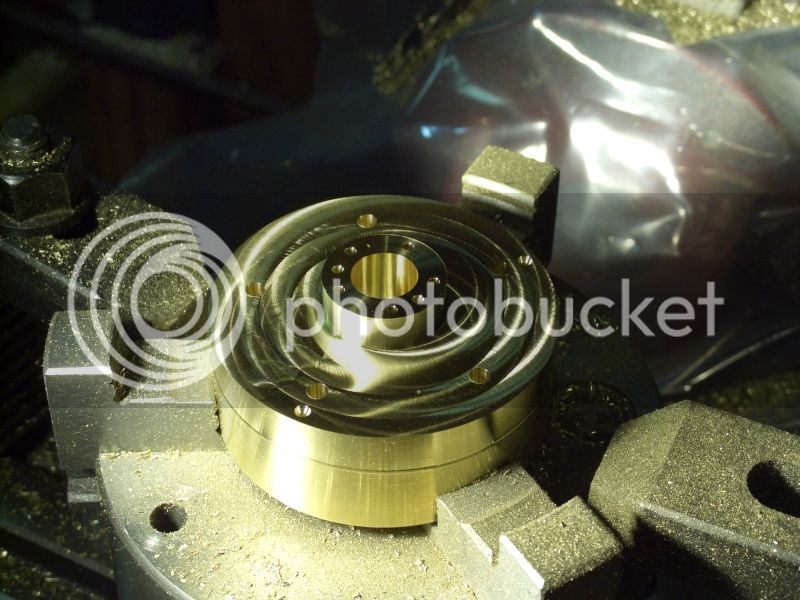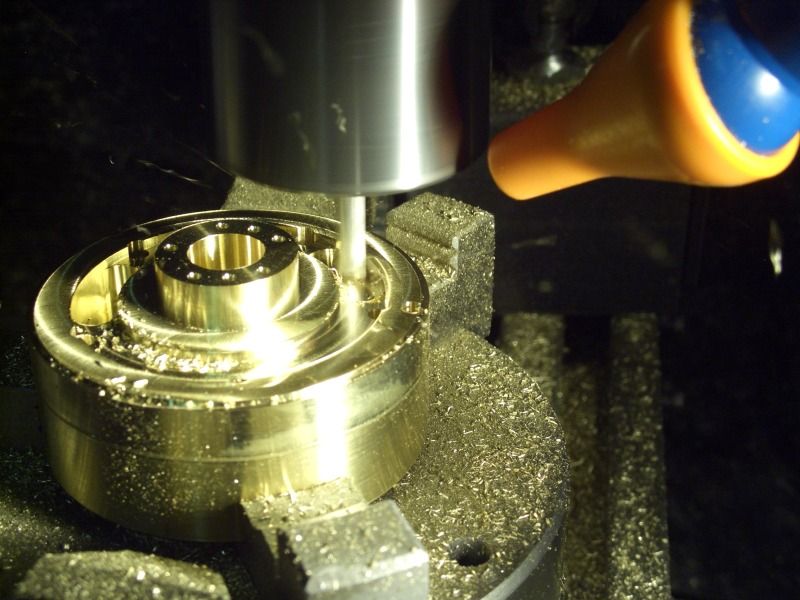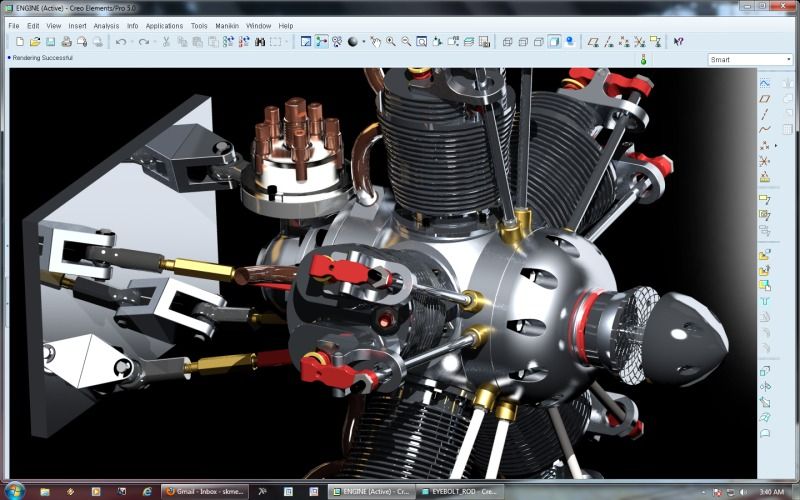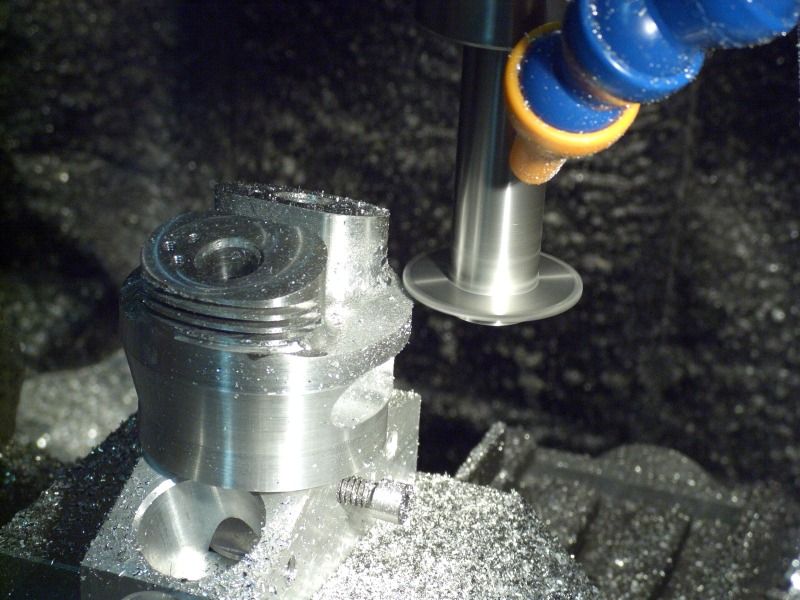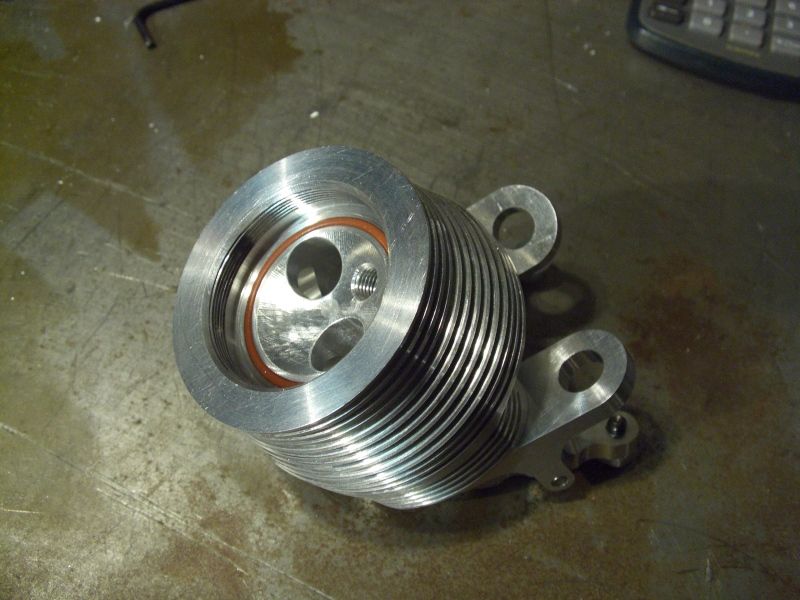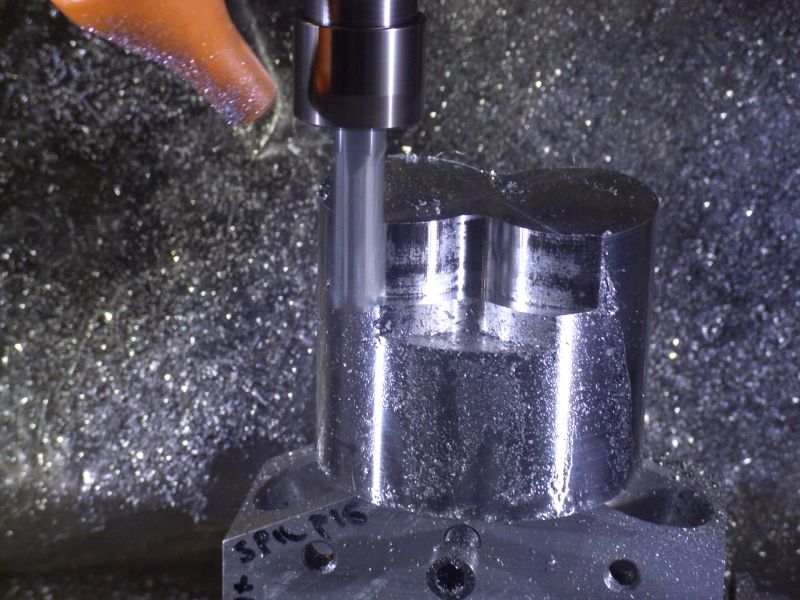Ok guys. So after the help I got over at the CNCzone and here (mostly here) (thanks Steve and Peter!) about master connecting rod design, I decided to continue designing my 5 cylinder radial. It's a long term project, might be moving soon, and I want to go back to school (mechanical engineering). So I don't know how long until I start making chips; but I DO want to actually build this!
A little background: I'm a 24 year old engineering student, been out of school for 4 years after having attended college for 2.5 years after high school. Trying to return and finish my degree. In the mean time I practice cnc machining and CAD design, as a hobby and to further my skills. Been machining since I acquired a lathe and mill from Harbor Freight back in 2006, CNC'd the mill and can't stop designing/ cutting since!! Truly addicting feeling when something comes out of a block of aluminum that you designed in CAD (and it actually fits/works). Have designed and built a couple compressed air motors, and a gas engine(which I still need to get running) over the past year (I'll post pics of those later); so I have some experience.
This project is the most complex and intricate I have done so far. I have learned much about Pro/Engineer CAD software since I started this project on September 19, 2011 (official start date); but have used the program since 2006. I have designed about 90% of the engine in CAD. My CAD program is about 6 years old, and not meant for Windows 7 so it's temperamental and likes to crash, but I some how got this far. I still need to figure out a distributor, mounting scheme, and if I should have an internal oil pump, along with about a million small details.
A few questions:
1. What is a good compression ratio? 8:1, 9:1?
2. Should I worry about having the ignition timing advance at higher RPMs? Probably not a big deal.
3. What's the best method for having equal compression ratios in each cylinder? I was thinking of using longer cylinders for cylinders 2, 5, and 3,4. I'd hate to have different piston lengths; but it could work, I wouldn't have to have different pushrod, intake tube lengths.
Material selection:
Crank/ main shaft: 1144 stress proof. Easy to machine, doesn't warp, strong.
Heads/ cylinders/ crank case: 6061 Al. Light, cheap, easy to machine.
Rockers/ rocker arms/ pistons: 7075 or Fortal AL. Strong, easy to machine, have lots of Fortal laying around.
Cylinder Liners: 4130 Steel tube. Don't want to bore out a lot of steel so I want to use some kind of tube, strong.
Pushrods: Titanium. Just because! ;D
Main Bearing: Brass or Bearing Bronze. Expensive either way, but I don't want to use aluminum.
Valves: ??? maybe 1144.
Ok now I'll post some vids/pics:
[ame]http://www.youtube.com/watch?v=-G0XYRx2O98[/ame]
[ame]http://www.youtube.com/watch?v=jY5ZzxdQXsY[/ame]
[ame]http://www.youtube.com/watch?v=BE6FhgO3u2Q[/ame]




A little background: I'm a 24 year old engineering student, been out of school for 4 years after having attended college for 2.5 years after high school. Trying to return and finish my degree. In the mean time I practice cnc machining and CAD design, as a hobby and to further my skills. Been machining since I acquired a lathe and mill from Harbor Freight back in 2006, CNC'd the mill and can't stop designing/ cutting since!! Truly addicting feeling when something comes out of a block of aluminum that you designed in CAD (and it actually fits/works). Have designed and built a couple compressed air motors, and a gas engine(which I still need to get running) over the past year (I'll post pics of those later); so I have some experience.
This project is the most complex and intricate I have done so far. I have learned much about Pro/Engineer CAD software since I started this project on September 19, 2011 (official start date); but have used the program since 2006. I have designed about 90% of the engine in CAD. My CAD program is about 6 years old, and not meant for Windows 7 so it's temperamental and likes to crash, but I some how got this far. I still need to figure out a distributor, mounting scheme, and if I should have an internal oil pump, along with about a million small details.
A few questions:
1. What is a good compression ratio? 8:1, 9:1?
2. Should I worry about having the ignition timing advance at higher RPMs? Probably not a big deal.
3. What's the best method for having equal compression ratios in each cylinder? I was thinking of using longer cylinders for cylinders 2, 5, and 3,4. I'd hate to have different piston lengths; but it could work, I wouldn't have to have different pushrod, intake tube lengths.
Material selection:
Crank/ main shaft: 1144 stress proof. Easy to machine, doesn't warp, strong.
Heads/ cylinders/ crank case: 6061 Al. Light, cheap, easy to machine.
Rockers/ rocker arms/ pistons: 7075 or Fortal AL. Strong, easy to machine, have lots of Fortal laying around.
Cylinder Liners: 4130 Steel tube. Don't want to bore out a lot of steel so I want to use some kind of tube, strong.
Pushrods: Titanium. Just because! ;D
Main Bearing: Brass or Bearing Bronze. Expensive either way, but I don't want to use aluminum.
Valves: ??? maybe 1144.
Ok now I'll post some vids/pics:
[ame]http://www.youtube.com/watch?v=-G0XYRx2O98[/ame]
[ame]http://www.youtube.com/watch?v=jY5ZzxdQXsY[/ame]
[ame]http://www.youtube.com/watch?v=BE6FhgO3u2Q[/ame]





















![DreamPlan Home Design and Landscaping Software Free for Windows [PC Download]](https://m.media-amazon.com/images/I/51kvZH2dVLL._SL500_.jpg)




















































